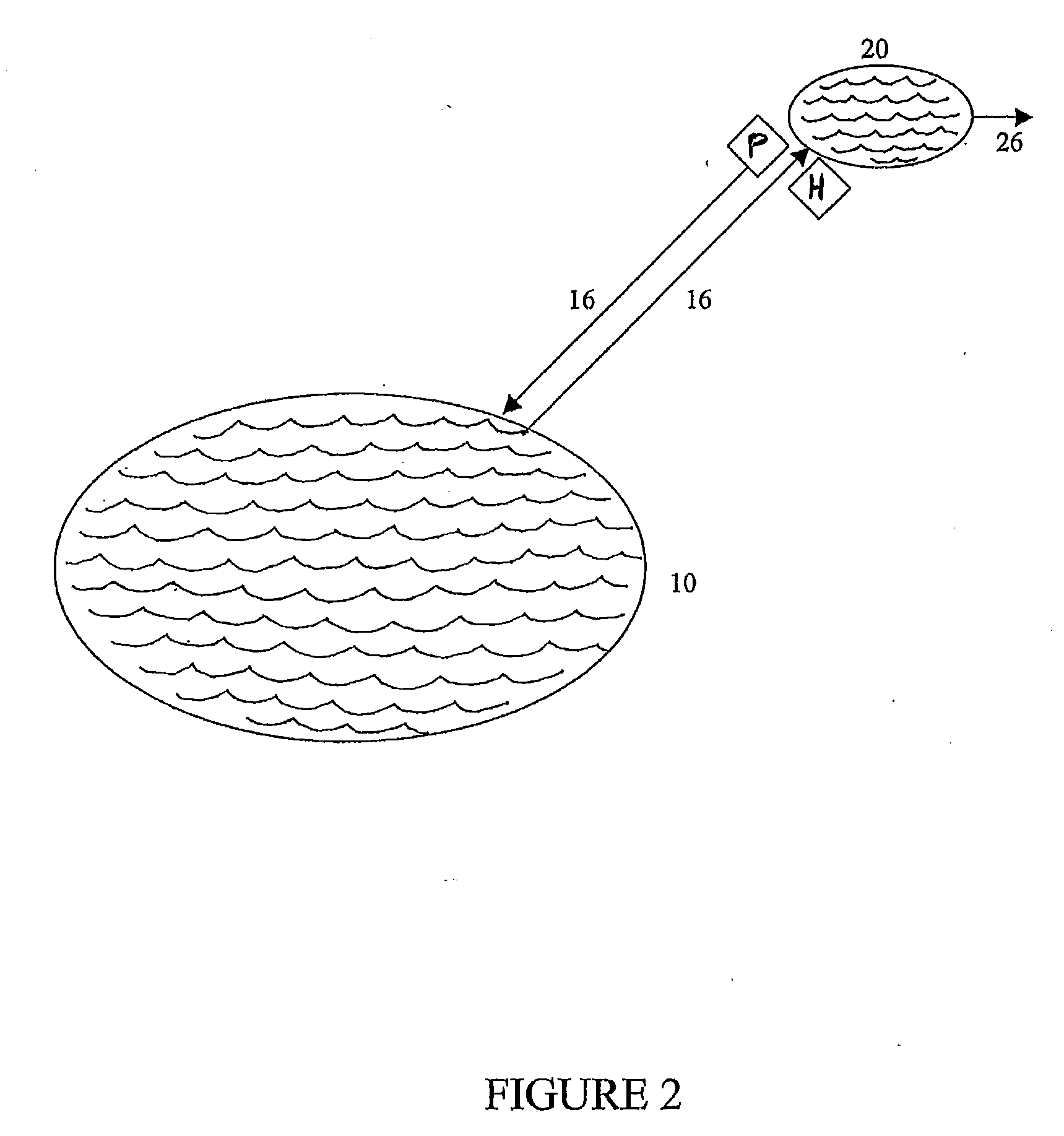System for selectively storing and diverting water among multiple reservoirs and method for improving utility of renewable water and energy resources throughout multiple river basins
a technology of selective storage and water distribution, applied in the field of pump storage systems and methods, can solve the problems of escalating renewable energy and water shortage crisis, not addressing significant shortcomings in continuous collection and storage of such energy, and not being able to efficiently distribute their water supply, so as to reduce the risk of loss, reduce the level of water, and increase flood control capabilities
- Summary
- Abstract
- Description
- Claims
- Application Information
AI Technical Summary
Benefits of technology
Problems solved by technology
Method used
Image
Examples
Embodiment Construction
[0049]As described in detail below, various embodiments of the present invention include at least one high elevation reservoir and multiple lower elevation reservoirs. The system of reservoirs may be combined with multiple conduits connecting lower elevation reservoirs to at least one high elevation reservoir, pumping stations for distributing water between lower elevation reservoirs and at least one high elevation reservoir, and hydroelectric power generation facilities may be further provided at one or more locations. The term “reservoir” is expressly understood to be defined to mean a location for storing water, either on or above ground surface or underground, which may include but is not limited to basins, reservoirs, lakes, ponds, levies, holding tanks, water towers, aquifers, and other structures for holding and retaining water. The term “conduit” is expressly understood to be defined to mean a path for distributing water, either on or above ground surface or underground, whi...
PUM
 Login to View More
Login to View More Abstract
Description
Claims
Application Information
 Login to View More
Login to View More - R&D
- Intellectual Property
- Life Sciences
- Materials
- Tech Scout
- Unparalleled Data Quality
- Higher Quality Content
- 60% Fewer Hallucinations
Browse by: Latest US Patents, China's latest patents, Technical Efficacy Thesaurus, Application Domain, Technology Topic, Popular Technical Reports.
© 2025 PatSnap. All rights reserved.Legal|Privacy policy|Modern Slavery Act Transparency Statement|Sitemap|About US| Contact US: help@patsnap.com



